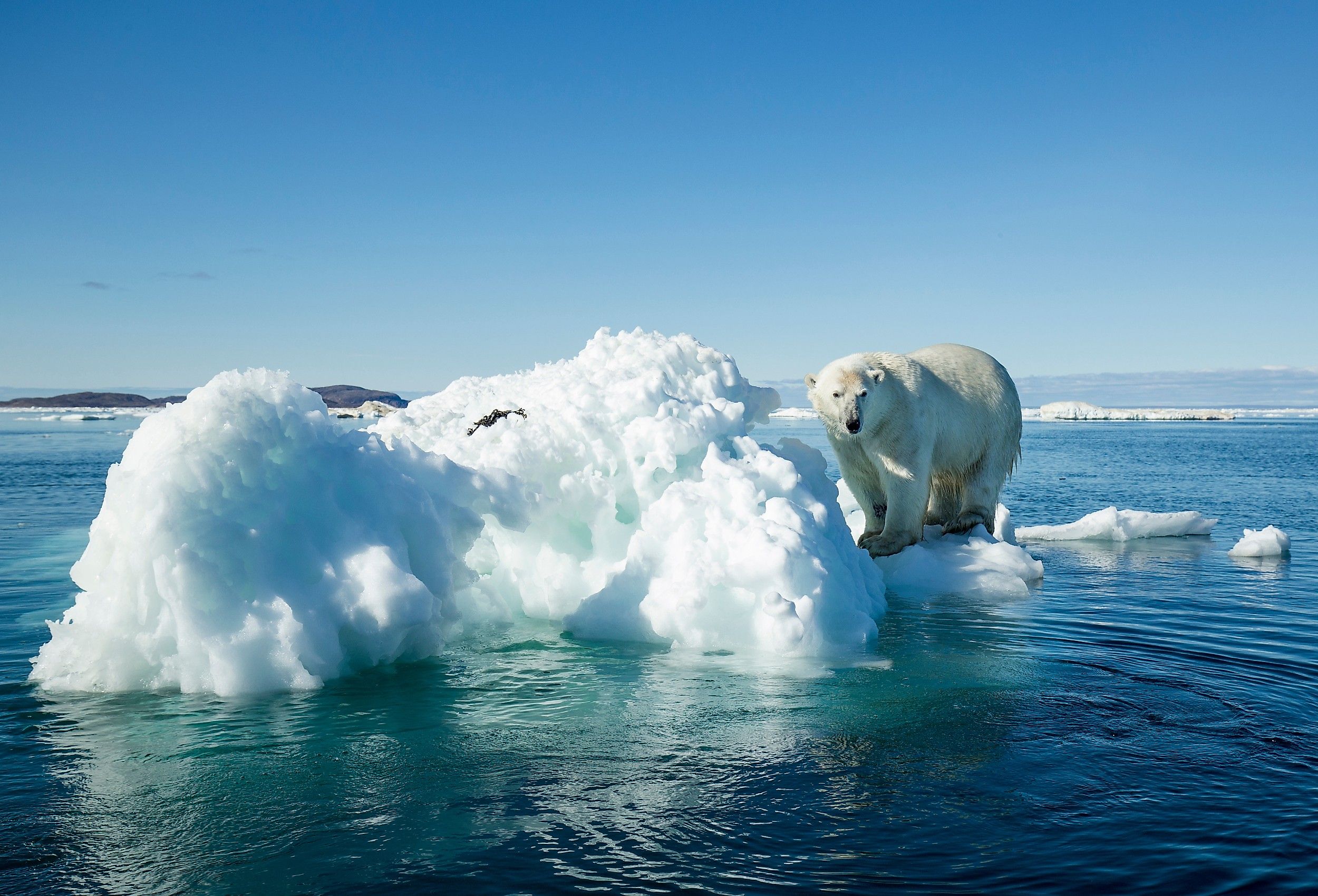
Hudson Strait
The Hudson Strait connects the Atlantic Ocean and the Labrador Sea to the Hudson Bay in east-central Canada. The narrow sea channel lies between Baffin Island and Nunavik and is around 500 miles long. It links Ontario and Manitoba with the Atlantic and could be an entrance to the Northwest Passage, however the ice in the Fury and Hecla Strait makes this path impossible.
Where Is The Hudson Strait?
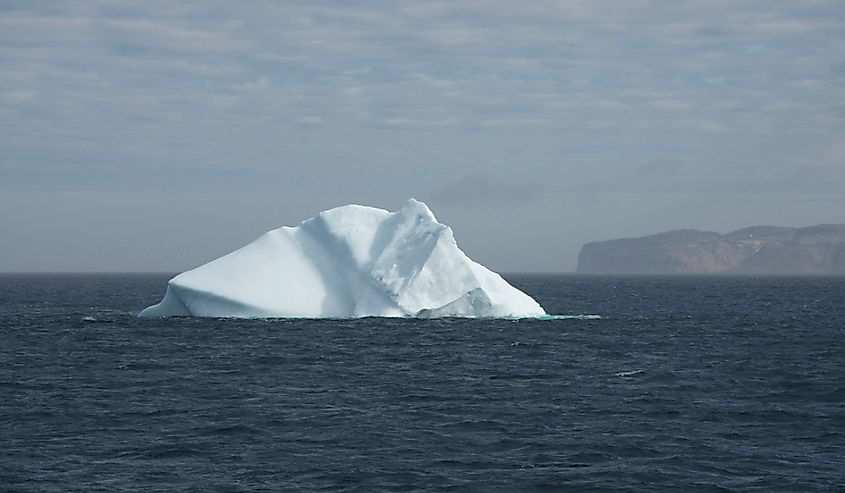
The Hudson Strait separates Baffin Island from the Ungava Peninsula in Québec. The eastern entrance lies between Cape Chidley and Resolution Island. The strait stretches in a north-western direction from Cape Hopes Advance to Cap de Nouvelle-France. From there, it trends west to Cap Wolstenholme.
The western entrance, or gap, houses a group of three islands: Salisbury, Mill, and Nottingham islands.
The Hudson Bay, which is the second largest bay in the world, drains a huge area including parts of Ontario, Alberta, Saskatchewan, Manitoba, and Nunavut, as well as some areas of North Dakota and Minnesota. The Hudson Bay is part of the Arctic Ocean and connects with the Atlantic at the Hudson Strait on the east, and with the Arctic at the Foxe Channel to the north.
Climate
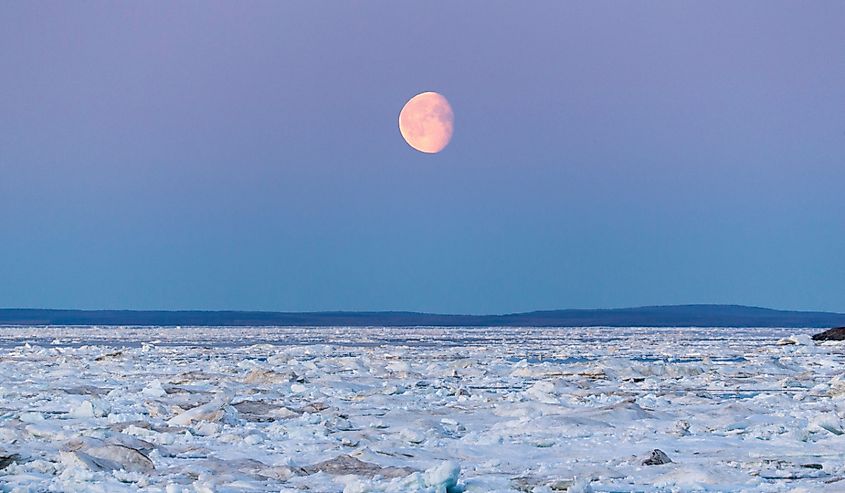
The Hudson Strait is never entirely frozen over, and the water allows moisture and heat to reach the atmosphere, which creates clouds, rain, and fog. As a result, Resolution Island is one of the foggiest places in the world, with fog reported nearly every day. When the strait partially freezes during winter, the water temperature drops dramatically.
The Hudson Bay has a continental climate, with extremely cold winters and sweltering summers. The bay also experiences frequent foggy days, especially during the fall, and in winter, storms often lash the area after December.
Marine Life
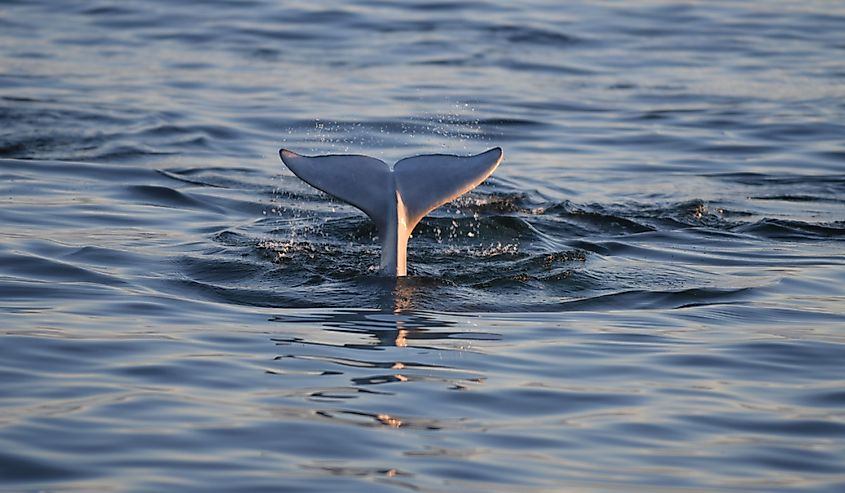
Marine life is abundant in the Hudson Strait and surrounding waters with bowhead whales frolicking in the open water during summer and beluga whales found here year-round. Even in the thick of winter, narwhals often navigate their way under the ice cover, and seals are spotted drifting on pack ice.
The strait is also home to harp seals that take to the open water during the summer months, and ringed seals that prefer pack ice and ice floes. Killer whales also make dramatic appearances in the strait where they move through water less than 200 m deep. Polar bears spend most of their time on the sea ice, while walruses play in the shallow water during the summer and hang around fast ice during winter.
As for the Hudson Bay, the area of Churchill (located on its edge) is known as the Polar Bear capital of the world as it is home to the southernmost colony of polar bears. There are also moose, caribou, wolves, and black bears here.
The bay offers near-perfect feeding conditions for beluga whales, orcas, dolphins, and walruses because of the high numbers of salmon, cod, and polar plaice in the water.
History Of The Hudson Strait
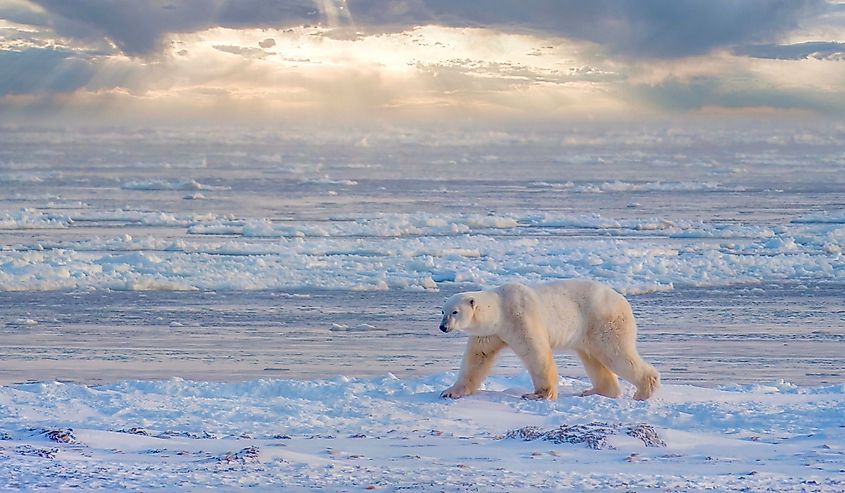
Sir Martin Frobisher, an English navigator, was the first European to enter the strait in 1578. He observed a tidal rip near the entrance and named it the Furious Overfall. The strait itself he called Mistaken Strait because he did not believe there was much of an entrance to the Northwest Passage. This body of water was later given the name Frobisher Bay.
John Davis, a chief navigator of Queen Elizabeth I, encountered the entrance to the strait during his 1587 voyage, but it was George Weymouth who first explored the strait in 1602. Weymouth sailed 300 nautical miles past the Furious Overfall.
Eventually, Sir Henry Hudson also explored the strait using his ship Discovery in 1610. Coincidentally, this was the same ship used by Weymouth. The strait got its name from Hudson before being explored again later by Thomas Button in 1612, and Robert Bylot and William Baffin in 1616.
Conclusion
Today, the Hudson Strait still provides direct access to Canada via the sea and is still an important route for commercial trade, especially fur. It is most navigable during late summer and early fall but can be traveled during winter thanks to icebreakers.











